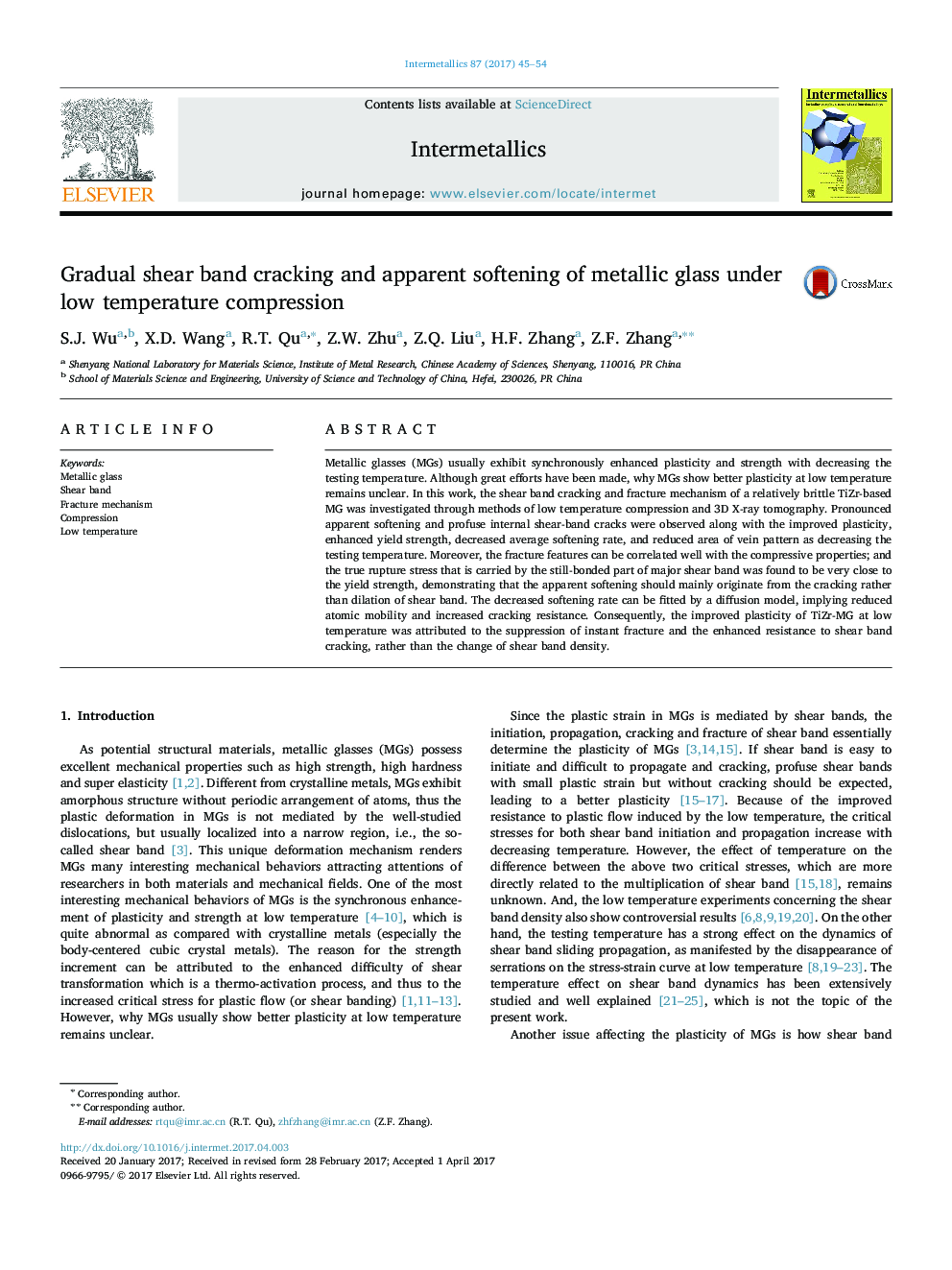| Article ID | Journal | Published Year | Pages | File Type |
|---|---|---|---|---|
| 5457669 | Intermetallics | 2017 | 10 Pages |
Abstract
Metallic glasses (MGs) usually exhibit synchronously enhanced plasticity and strength with decreasing the testing temperature. Although great efforts have been made, why MGs show better plasticity at low temperature remains unclear. In this work, the shear band cracking and fracture mechanism of a relatively brittle TiZr-based MG was investigated through methods of low temperature compression and 3D X-ray tomography. Pronounced apparent softening and profuse internal shear-band cracks were observed along with the improved plasticity, enhanced yield strength, decreased average softening rate, and reduced area of vein pattern as decreasing the testing temperature. Moreover, the fracture features can be correlated well with the compressive properties; and the true rupture stress that is carried by the still-bonded part of major shear band was found to be very close to the yield strength, demonstrating that the apparent softening should mainly originate from the cracking rather than dilation of shear band. The decreased softening rate can be fitted by a diffusion model, implying reduced atomic mobility and increased cracking resistance. Consequently, the improved plasticity of TiZr-MG at low temperature was attributed to the suppression of instant fracture and the enhanced resistance to shear band cracking, rather than the change of shear band density.
Related Topics
Physical Sciences and Engineering
Materials Science
Metals and Alloys
Authors
S.J. Wu, X.D. Wang, R.T. Qu, Z.W. Zhu, Z.Q. Liu, H.F. Zhang, Z.F. Zhang,
